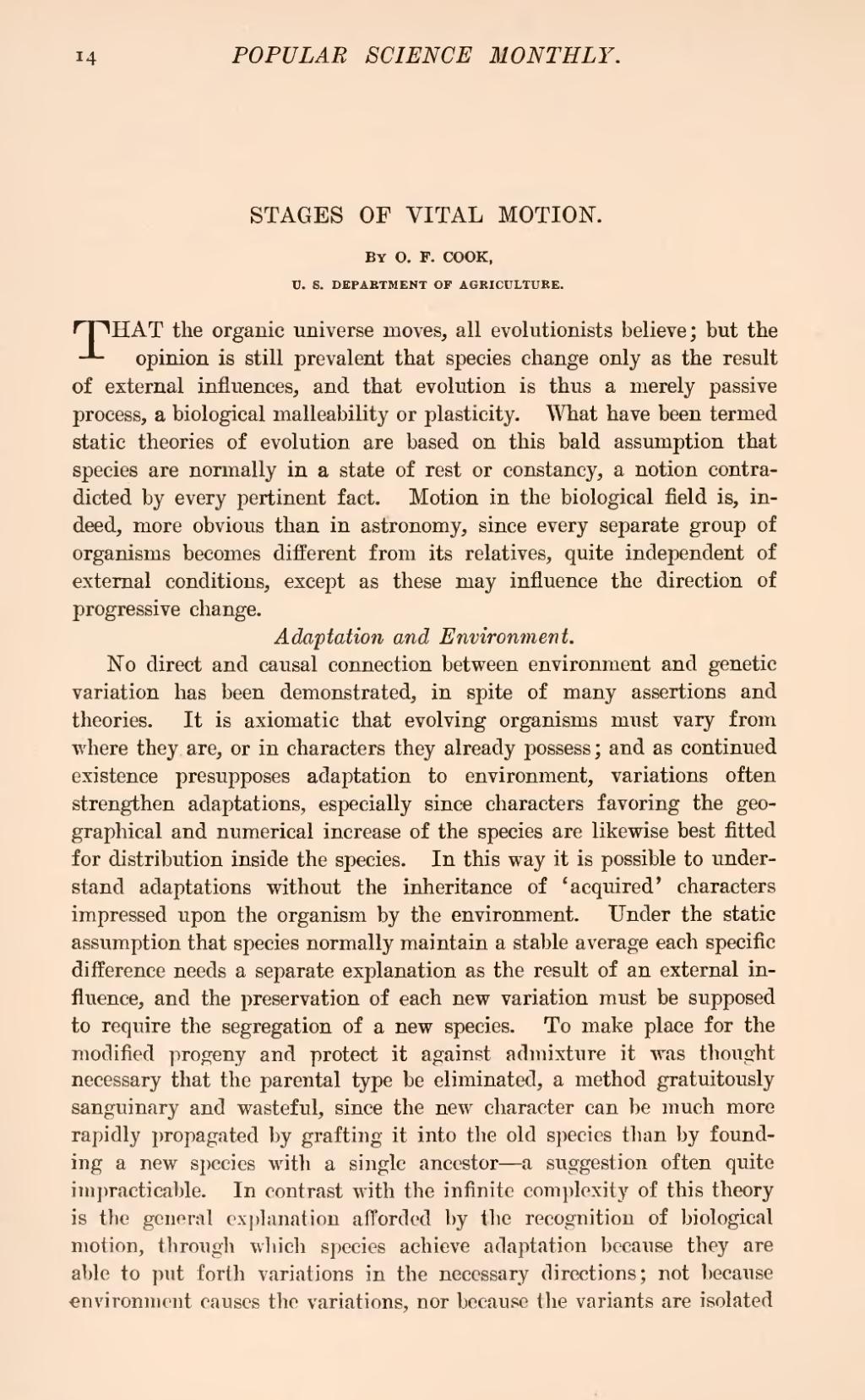| STAGES OF VITAL MOTION. |
By O. F. COOK,
U. S. DEPARTMENT OF AGRICULTURE.
THAT the organic universe moves, all evolutionists believe; but the opinion is still prevalent that species change only as the result of external influences, and that evolution is thus a merely passive process, a biological malleability or plasticity. What have been termed static theories of evolution are based on this bald assumption that species are normally in a state of rest or constancy, a notion contradicted by every pertinent fact. Motion in the biological field is, indeed, more obvious than in astronomy, since every separate group of organisms becomes different from its relatives, quite independent of external conditions, except as these may influence the direction of progressive change.
Adaptation and Environment.
No direct and causal connection between environment and genetic variation has been demonstrated, in spite of many assertions and theories. It is axiomatic that evolving organisms must vary from where they are, or in characters they already possess; and as continued existence presupposes adaptation to environment, variations often strengthen adaptations, especially since characters favoring the geographical and numerical increase of the species are likewise best fitted for distribution inside the species. In this way it is possible to understand adaptations without the inheritance of 'acquired' characters impressed upon the organism by the environment. Under the static assumption that species normally maintain a stable average each specific difference needs a separate explanation as the result of an external influence, and the preservation of each new variation must be supposed to require the segregation of a new species. To make place for the modified progeny and protect it against admixture it was thought necessary that the parental type be eliminated, a method gratuitously sanguinary and wasteful, since the new character can be much more rapidly propagated by grafting it into the old species than by founding a new species with a single ancestor—a suggestion often quite impracticable. In contrast with the infinite complexity of this theory is the general explanation afforded by the recognition of biological motion, through which species achieve adaptation because they are able to put forth variations in the necessary directions; not because environment causes the variations, nor because the variants are isolated
